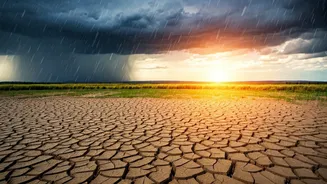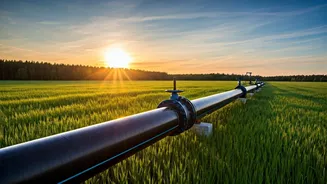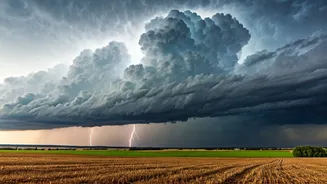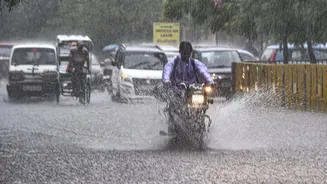Monsoon's Early Arrival
The Northeast monsoon's premature arrival has become a significant talking point. The monsoon season, which usually commences around October and lasts
until December, has shown up ahead of schedule. The early onset has led to heavy rainfall across several states, leading to an immediate change in the local weather conditions. This early appearance is a deviation from the expected pattern, catching many by surprise. The impact of the monsoon's early presence is already being felt in areas that are now facing the effects of increased precipitation. This includes altered travel plans, changes in daily routines, and effects on several agricultural activities, highlighting its substantial effect.
Surplus's Short Lifespan?
The early onslaught of the monsoon has given rise to the question of its sustainability. While the early rains have brought much-needed relief and filled water reservoirs, the possibility of a dry spell next month has emerged. Experts are speculating that this initial surplus might be short-lived. This possibility is a cause for concern, particularly for agricultural sectors, which rely heavily on consistent and adequate rainfall during the monsoon season. A dry spell can bring adverse consequences like water scarcity, impacting crop production and leading to broader economic effects. Therefore, the prevailing focus is on tracking rainfall patterns and preparing for potential water management challenges.
Regional Impact Overview
The impact of the early monsoon is not uniform across all regions. The intensity of rainfall and its duration varies from state to state. While some areas have received abundant rainfall, experiencing waterlogging and other weather-related disruptions, others might have received less precipitation. States that depend heavily on the Northeast monsoon for their agricultural output will be closely monitoring the progress and the intensity of the upcoming dry spells. The regional variations in rainfall underscore the need for targeted preparedness and the deployment of appropriate strategies to manage water resources efficiently. The early arrival will also impact the availability of drinking water and other public utilities.
Preparedness Measures
With the potential threat of a subsequent dry spell, proactive measures become crucial. State governments and local authorities are preparing to manage water resources effectively. This includes the efficient use of existing water reservoirs, the promotion of water conservation, and awareness campaigns regarding water usage. It also involves contingency plans to ensure access to water in case the dry spell materializes. Moreover, it is crucial to implement advanced strategies and technologies to monitor the weather patterns and predict the possible impact. This way, any negative effects can be minimized, thus safeguarding the population and the agricultural sector.
Monitoring and Analysis
Continuous monitoring and analysis of the weather patterns and rainfall data is important. Meteorological departments are working to gather data, analyze the changing trends and forecast the weather. They are closely watching the rainfall distribution and analyzing the possible consequences. Such in-depth insights are vital for making informed decisions and adopting suitable measures. Regular updates and advisories issued by these departments help in ensuring that the general public is well informed. This includes warnings about potential weather hazards, which lets people and authorities react in a timely manner. This collaborative effort helps in mitigating the effect of the ongoing monsoon season.















